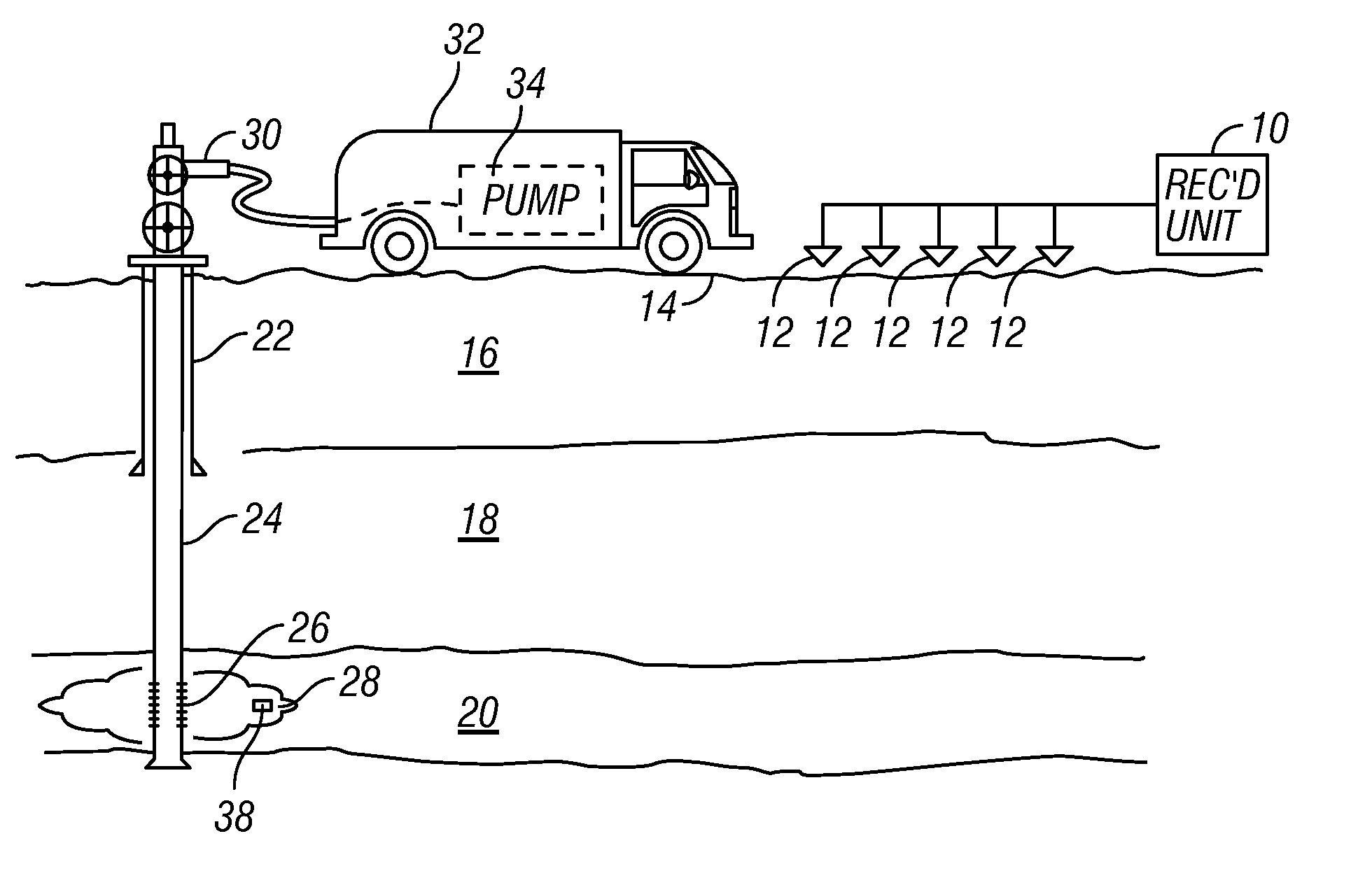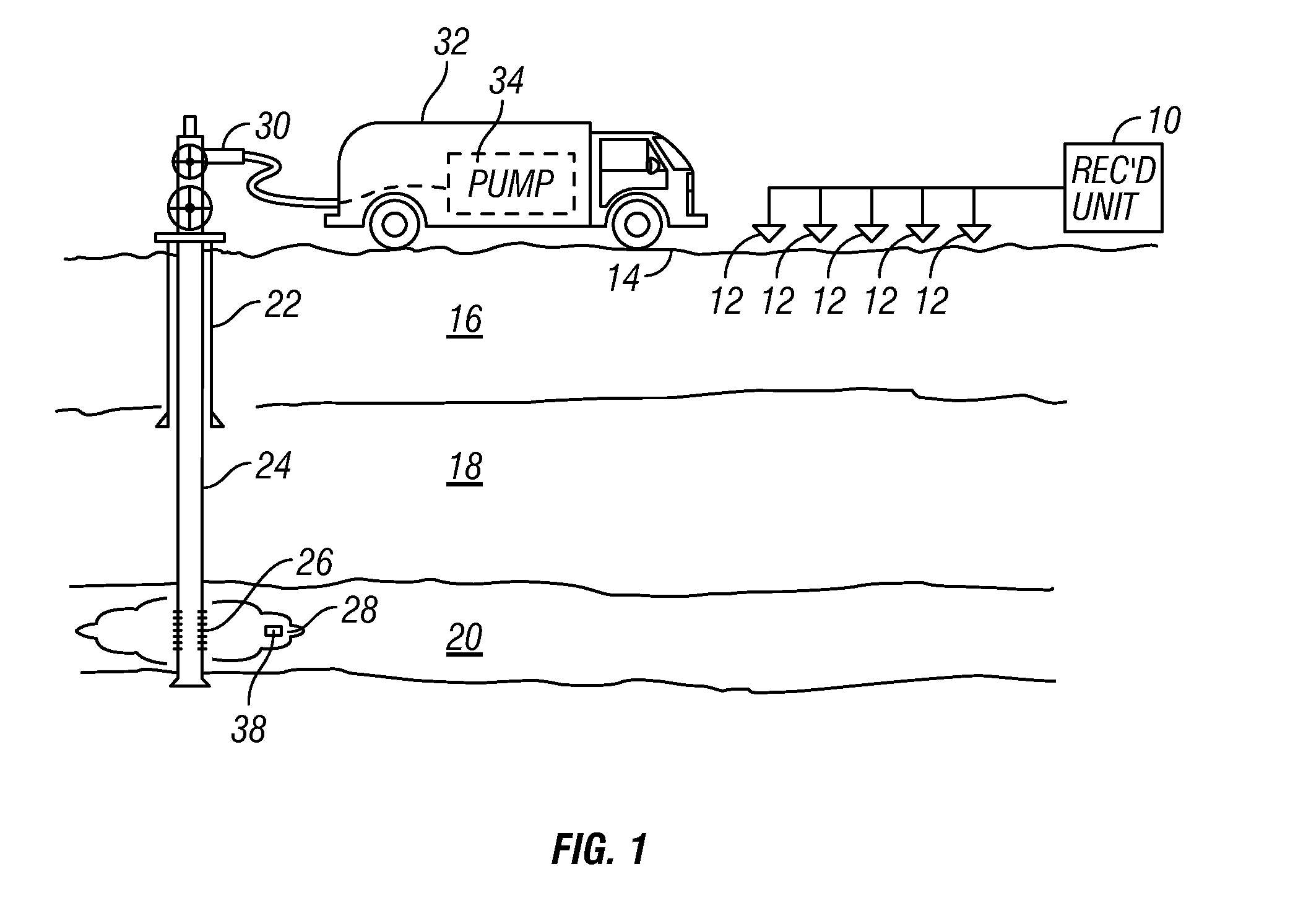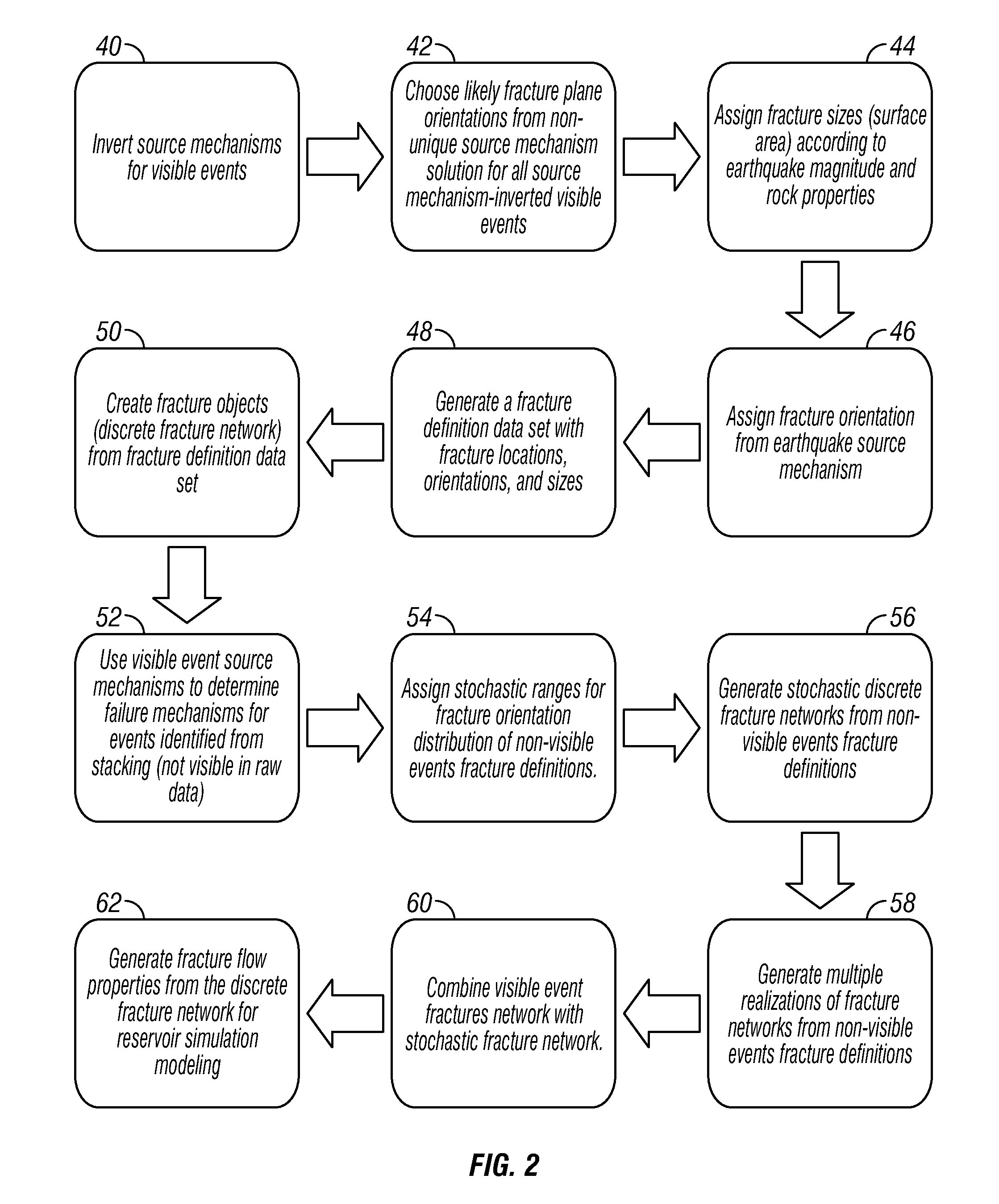Method for determining discrete fracture networks from passive seismic signals and its application to subsurface reservoir simulation
a discrete fracture network and seismic signal technology, applied in seismicology, instruments, measurement devices, etc., can solve the problems of few measurements that can provide fracture size in a particular reservoir, and the above methods have proved less than satisfactory for use with reservoir simulation
- Summary
- Abstract
- Description
- Claims
- Application Information
AI Technical Summary
Benefits of technology
Problems solved by technology
Method used
Image
Examples
Embodiment Construction
[0023]FIG. 1 shows a typical arrangement of seismic receivers as they would be used in one application of a method according to the invention. The embodiment illustrated in FIG. 1 is associated with an application for passive seismic emission tomography known as “fracture monitoring.” It should be clearly understood that the application illustrated in FIG. 1 is only one possible application of a method according to the invention. In other applications, passive seismic monitoring may take place in the absence of equipment shown in FIG. 1 used for pumping fluids into the subsurface formations.
[0024]In FIG. 1, each of a plurality of seismic receivers, shown generally at 12, is deployed at a selected position proximate the Earth's surface 14, generally above or proximate to a volume of the subsurface to be evaluated. The seismic receivers 12 can also be deployed in one or more wellbores (not shown) drilled through the subsurface. In marine applications, the seismic receivers would typic...
PUM
 Login to View More
Login to View More Abstract
Description
Claims
Application Information
 Login to View More
Login to View More - R&D
- Intellectual Property
- Life Sciences
- Materials
- Tech Scout
- Unparalleled Data Quality
- Higher Quality Content
- 60% Fewer Hallucinations
Browse by: Latest US Patents, China's latest patents, Technical Efficacy Thesaurus, Application Domain, Technology Topic, Popular Technical Reports.
© 2025 PatSnap. All rights reserved.Legal|Privacy policy|Modern Slavery Act Transparency Statement|Sitemap|About US| Contact US: help@patsnap.com



